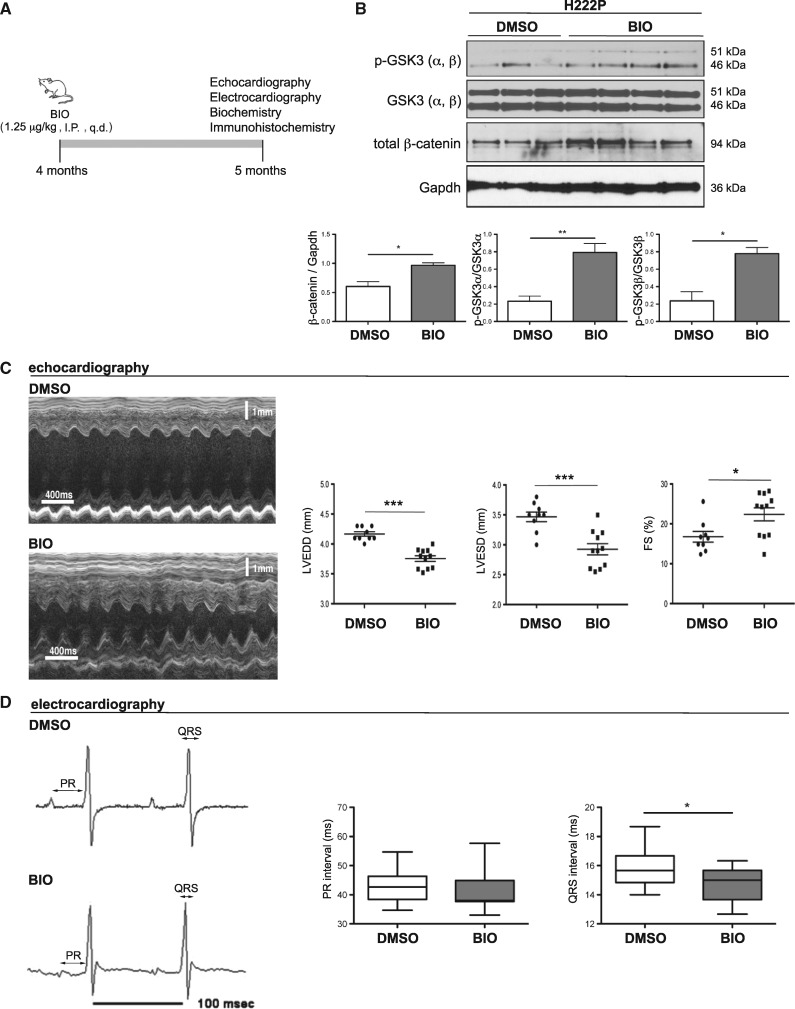Figure 4.
Activation of WNT/β-catenin signalling using BIO improves left ventricular function and intraventricular conduction in LmnaH222P/H222P mice. (A) Schematic representation of the treatment protocol of LmnaH222P/H222P (H222P) with BIO. I.P., intra-peritoneal; q.d., daily. (B) Representative immunoblots showing phospho-GSK3, total GSK3 and total β-catenin expression in hearts from 6 month-old male H222P mice treated with DMSO placebo or BIO (1.25 μg/kg/daily). Migrations of molecular mass standards in kilodaltons (kDa) are indicated at the right of the blots. Error bars represent means ± standard errors of means for total β-catenin/gapdh, p − GSK3/total GSK3 and p − GSK3/total GSK3 relative expression in 20-week-old male H222P mice treated with BIO (n = 4) or DMSO (n = 3). *P < 0.05, **P < 0.005. (C) Representative M-mode transthoracic echocardiographic tracings from 20-week-old male H222P mice treated with DMSO or BIO. Graphs show mean left ventricular end-diastolic diameter (LVEDD), left ventricular end-systolic diameter (LVESD), and left ventricular fractional shortening (FS) in 20-week-old male H222P mice treated with BIO (n = 5) or DMSO (n = 8). Values for each individual mouse as well as means ± standard errors of means are shown. *P < 0.05, ***P < 0.0005. (D) Representative electrocardiogram tracings from 20-week-old H222P mice treated with DMSO or BIO. Graphs showing mean PR and QRS intervals in 20-week-old H222P mice treated with BIO (n = 5) or DMSO (n = 8). Data are represented as means ± standard errors of means. Values are shown as 25th to 75th percentiles of data values. The line in the middle is the median. Whiskers (Tukey method) extend down to the minimum value and up to the maximum value. *P < 0.05.

